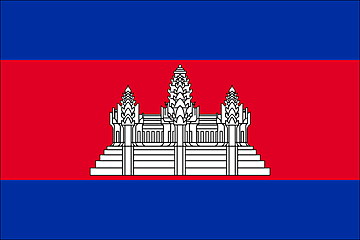The Thai White Gold and Ayuthia
News of Cambodia N° 0813-E
The Thai white gold and the Ayuthia's superiority on Angkor
Khemara Jati
Montreal, Quebec
February 7th, 2008
Thailand is currently the first rice’s exporter country of the world. The rice consumer’s increase in an exponential way increasing then the rice's production in the world cannot follow. The result : the price of the rice increases more than expectation. It makes the Thais people great happiness. It is interesting then to question the reasons of this prosperity.
Henri Mouhot is the first one who compares Menam to the Nile in his book « Voyages dans les Royaumes de Siam, de Cambodge et de Laos » (Journeys in the Realms of Siam, Cambodia and Laos, Ed. Olizane, Geneva 1989, 1st edition 1868), page 239 « the banks of Menam are covered as far as the eye can see with magnificent harvests; the periodic flood makes them of a fertility comparable to those of the Nile, and famous nevertheless since the antiquity. » As the Nile of the Pharaohs, every year Menam expands its fertile silt during its floods over the ricefields. It was not the case of artificial irrigation system using in Cambodia during Angkor era. Nowadays, the rice production in Thailand is concentrating on the banks of Menam and its tributaries as well as its delta with insignificant irrigation works since the Angkor time. This fact also explains the Siamese’s southward: from Ayuthia towards Thon Buri then Bangkok.
It is likely that Ayuthia was built by kings of Angkor, in particular by Jayavarman VII who had difficulties to manage the agricultural production with the Baray system fed artificially by waters of Phnom Kulên. Bernard Philippe Groslier left his main part and very important article: « the Hydraulic Town of Angkor: Exploitation or Overexploitation of the land? ». This documents lead to understand not only the importance of the agricultural prosperity of the Angkor civilization, but also its inexorable decline as well. (In Bulletin de l’Ecole Française d’Extrême-Orient, 1979, pages 161-202. What Groslier found by photos from the air and by excavations on the ground (the first ones made in Angkor), confirmed recently by statements of NASA satellite. In this article we raise from page 187:
« Angkor Thom is the last hydraulic town, in fact the last one of the Khmer cities. After her - up to the definitive abandon of Angkor indeed, it is there where the ultimate demonstrations of this civilization is concentrated - nothing more will be manifested, not even a single modest reservoir. The system died. »
It is also necessary to note that the great king Ponhea Yat had to leave Angkor definitely in 1431, because as writes Groslier « The system died ». No any single effort can fight against the nature not even with our irrigation system. It is also necessary to note that during 1520s the Portuguese reached Ayuthia with their boats, their firearms, and their knowledge. From this date it is not possible any more to write Cambodia's history without taking into account the massive Europeans arrival in our region and in eastern Asia. Nowadays, is it possible to understand what is taking place in current Cambodia by ignoring the conflicts of the geostrategic interests of major powers?
Nowadays, Cambodia can produce enough rice’s for her people and even export a million tons with the government cares of national interests. In this current regime, these million tons of rice are regrettably exported by Prey Nokor and Bangkok. Because the lack of roads especially policy to export accordingly this rice by Sihanoukville. Our farmers are obliged to sell their rice, with cheap price, to our neighbors equipped with proper access to Prey Nokor and Bangkok from our borders. All Cambodians in Cambodia know it and regret it sadly. On the other hand our rice is of better quality much netter than that producing by our neighbors. This is one more reason which makes our neighbors consuming our rice then increasing their rice exportation.
The best for us Cambodians, especially those living abroad, is to know above all, which parameter is necessary to solve unity equation of our people. For this reason it is important to listen to our fellow countrymen in Cambodia. After that and only after that, we can direct our efforts as well as the foreign helps. What is fundamental is to know how to distinguish the helps favoring the seizure of our neighbors of our lands and our wealth, helps which is making Cambodia independent of our neighbors in particular in the energy point of view. It is the fundamental question that every Cambodian has to settle and find out elements of answer.
It is necessary to note however that major powers have no interest, at least for the moment, to help us in two fundamental domains which are fundamental for the unity and the perpetuity of the Cambodian nation as well as for the development of the knowledge within our people:
1/. The use of our national language in universities and as a consequence the knowledge's distribution within our people and within our children by books of scientific popularization. To return Cambodians proud of their writing is the first fundamental objective to achieve, following examples of all the developed nations in the world, in particular at our closed neighbors.
2/. Write our History by ourselves. First by taking into account discoveries brought by archaeological excavations in particular regarding the economy where the productions were the fundamental bases of the Angkor civilization prosperity. Then by placing our history in the context of the world civilization. That is what our regretted Bernard Philippe Groslier tried to do.
080207
Note : Cet article est disponible en français sur demande.


0 Comments:
Publier un commentaire
<< Home